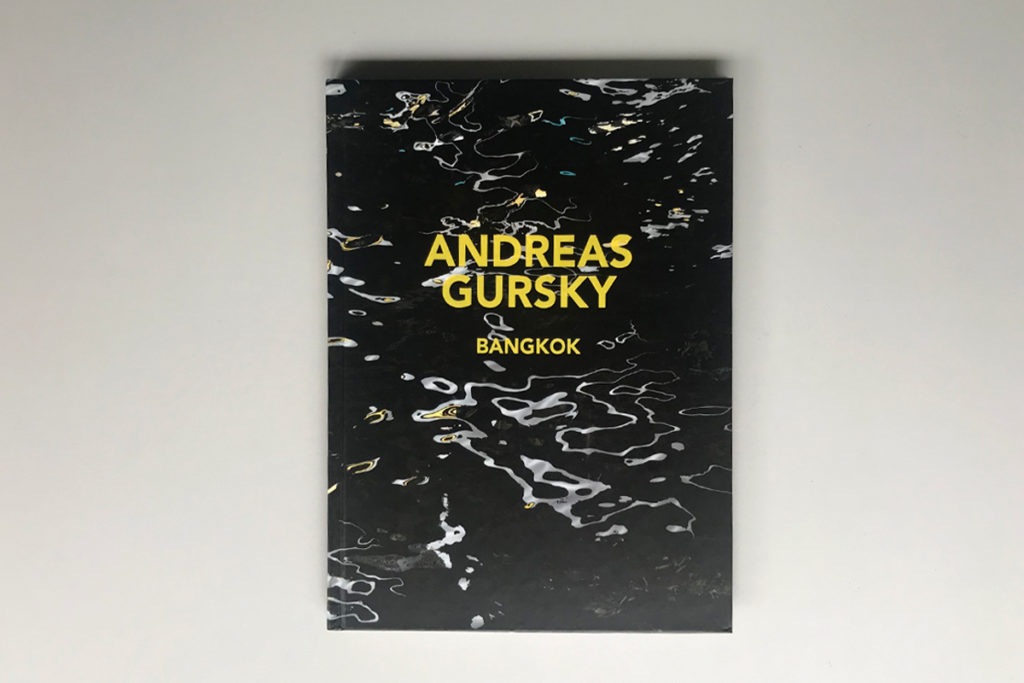Andreas Gursky-Bangkok photo book. In May 2020 I was talking with my friend Kathi about the German Photographer Andreas Gursky, moreover, I have been following his Artwork for a long time. I asked if she knew him or not. Kathi told me she knows him as well, also she has one of his photography books.
I was excited that she knew him. After talking a lot about Andreas Gursky she lent this book to me. However, I couldn’t keep the book, but I made a few photos from the book, here I’m posting a few pages from this amazing book. Besides this book, I suggest you take a look at other artworks from Andreas Gursky.

Book pages






Andreas Gursky-Bangkok photo book
Gursky’s photos depict the dark, moving water of Thailand’s Chao Phraya river, whose shimmering surface possesses the qualities of abstract painting.
Indeed these photos are reminiscent of some of the most recognizable examples of Modernist Abstraction such as the work of Hans Arp, but they also echo the more hostile patterns of military camouflage. Seductively beautiful at first glance, it is only in time that the rubbish of civilisation becomes recognizable floating on the surface of the river – the flotsam of a threatening reality moving upon colorful reflections.
Gursky alludes to the ecological problems that Jeopardise Bangkok, and which shortly after these images were made, culminated in the widespread flooding that devastated great parts of Thailand.
Who is Andreas Gursky
He is a German photographer and professor at the Kunstakademie Düsseldorf-Germany. Andreas Gursky was born on 15 January 1955. Andreas Gursky is known for his large-format architecture and landscape color photographs. He often uses a high point of view in most of his photos.
In addition, in Düsseldorf he has a shared studio with Laurenz Berges, Thomas Ruff, and Axel Hütte. The building, was a former electricity station, However, they transformed the Station into an artist’s studio and living quarters, in 2001.
Before the 1990s, Gursky did not digitally manipulate his images. In the years since, Gursky has been frank about his reliance on computers to edit and enhance his pictures, creating an art of spaces larger than the subjects photographed.
Andreas Gursky Career and Style
The perspective in many of Gursky’s photographs is drawn from an elevated vantage point. This position enables the viewer to encounter scenes, encompassing both the center and periphery, which are ordinarily beyond reach. This sweeping perspective has been linked to engagement with globalization.
About Andreas Gursky Bangkok photo book 99 Cent
The photograph 99 Cent (1999) was taken at 99 Cents Only store on Sunset Boulevard in Los Angeles and depicts its interior as a stretched horizontal composition of parallel shelves, intersected by vertical white columns.
RELATED TOPICS:


1 Thought on Andreas Gursky-Bangkok photo book